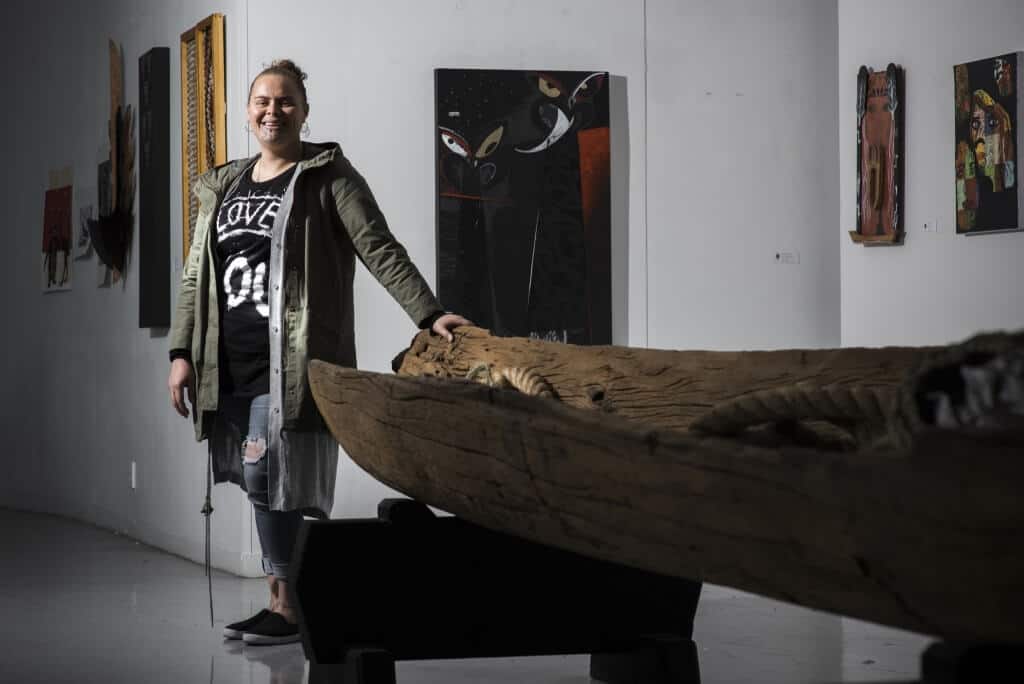
A place for everyone: EIT Toihoukura lecturer Erena Koopu loves helping students explore their creative side.
Toihoukura lecturer Erena Koopu helps people explore their creative side.
Committed to sustaining Māori culture through art, Erena Koopu found a happy home for her passion at Toihoukura.
Now a lecturer for the prestigious Māori art school, the 32-year-old kapa haka enthusiast and motherof-two first came to Toihoukura as a 19-year-old, and was one of the first students to graduate from the degree programme there.
After a year’s postgraduate study at university, she taught at the Huntly Kura Kaupapa Wharekura (Māori full-immersion school) Rakaumanga for five years, before Toihoukura lecturer Steve Gibbs asked her to come back to teach. Initially, Erena was employed as the principal tutor for the Level 4 Foundation Certificate and the Diploma in Māori Visual Arts. Five years on, she is the programme coordinator and senior lecturer responsible for the degree.
Toihoukura keeps getting stronger, says Erena. “Toihoukura has so many strengths – our involvement in the community in the Tairāwhiti whānui, our marae and schools. We have a really strong team of staff and are able to work really well together. I collaborate with colleagues on a daily basis, like Ruth Smith, who is our in-house linguist for the toi te reo/te reo Māori lectures in much the same way artist Ralph Hotere and poet Hone Tuwhare collaborated.”
Toihoukura is also getting stronger in its exhibitions with art displayed in New Zealand embassies. Links with other indigenous cultures were strengthened through a recent trip to the 12th Festival of Pacific Arts in Guam. Three Toihoukura staff were selected to join the delegation of 150 artists from Aotearoa. They returned confident that the work they are doing as art school educationists and artists is headed in the right direction, ensuring that Māori art forms survive for future generations.
“It’s big for us to be involved in those things and it makes our art and teaching richer. Sitting alongside people like Lisa Reihana who exhibit all over the world definitely gave us an idea of what’s possible, and will further our teaching and art practice. As an artist and a teacher, you need to be aware of how your art is evolving. In Guam I sat in our village huts with a couple of pencils, felts and ink pens and created some things I couldn’t have created in a different head space.”
“There’s a place here for all sorts of people,especially people of different ages. Some have had enough of working nine-to-five and want to turn their doodles into something else. They might be 50 when they reach that stage. In my experience, those students who have worked their whole lives and left jobs with good incomes to live on a student allowance tend to be happier than they have ever been and become richer people and artists for it.”
